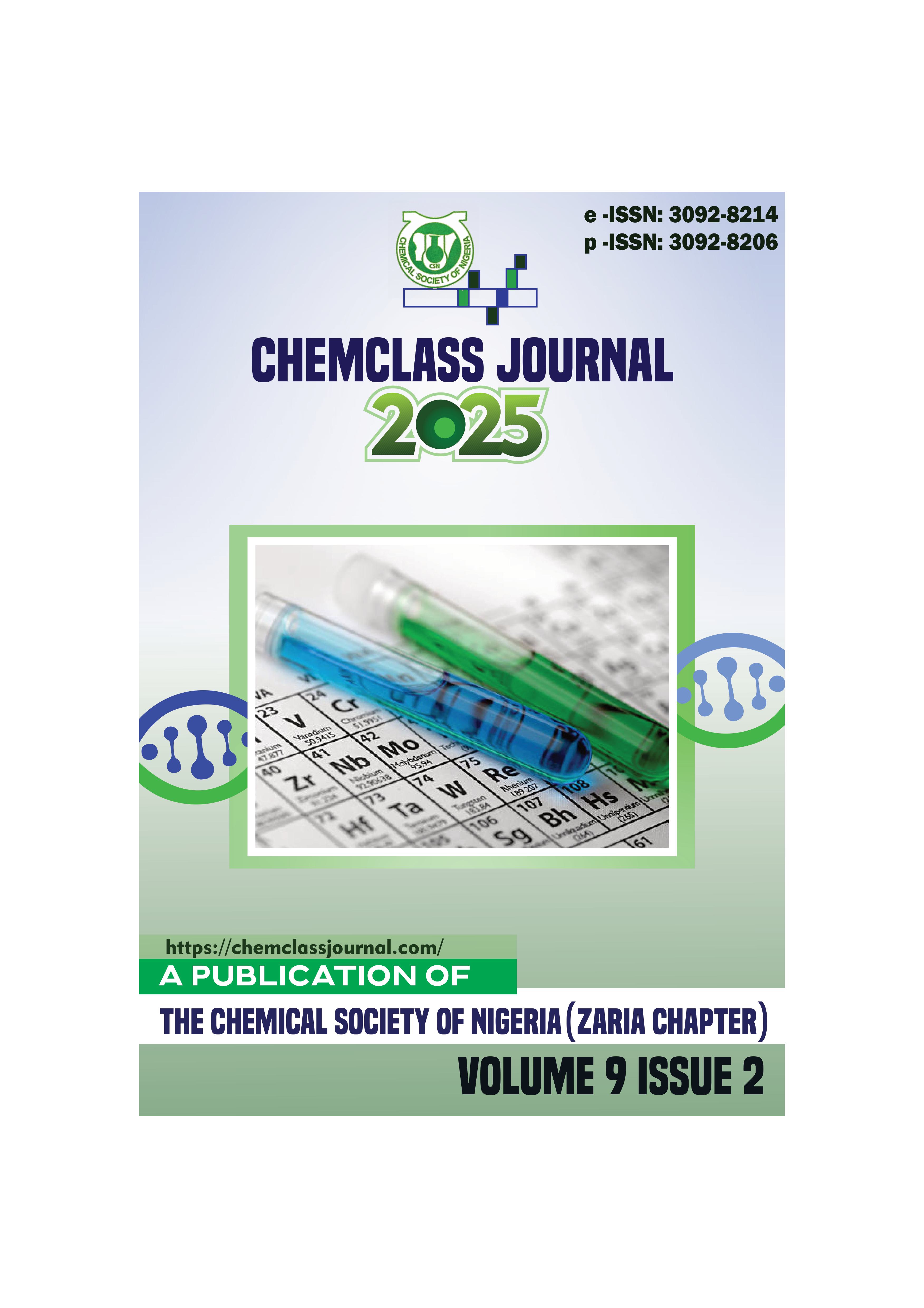Synthesis, Characterization and Antimicrobial Studies Metal Complexes of Co (II) and Cu (II) with Schiff Base Derived from 2,6-Diaminopyridine and 2-Hydroxybenzaldehyde
DOI:
https://doi.org/10.33003/chemclass-2025-0902/190Keywords:
2,6-diaminopyridine , 2-Hydroxybenzaldehyde , Ligand, Characterization, Metal complex, Schiff baseAbstract
Complexes of Co (II), Cu (II) with Schiff base derived from condensation of 2,6-diaminopyridine and 2-hydroxybenzaldehyde were successfully synthesized and characterized on the basis of FT-IR, Molar
conductance, Magnetic susceptibility, Melting point/Decomposition temperature and Uv-Visible spectroscopy. The Schiff base and the metal complexes are found to be insoluble in water and some solvents,
but very much soluble in DMSO and DMF as revealed by their solubility test. The Schiff base melts at 220 °C while the complexes decomposed within range of 260 - 270 °C. Magnetic moment values of the complexes (2.04 – 3.97 BM) indicate that all the complexes are paramagnetic. The low molar conductance values range 40 - 46.1 ohm-1cm2mol-1 indicates the non-electrolytic nature of the complexes. A peak at 1607 cm-1 from FT-IR analysis is assigned to azomethine nitrogen of the Schiff base shifted to 1603 and 1611 cm-1 in Co (II) and Cu (II) Complexes, respectively. UV-Visible spectroscopy also revealed the coordination of Schiff base to the metal ions due to the appearance of new bands in the complexes that are absent in the ligand. Metal to ligand ratio were found to be 1:1 as suggested by Job’s method of continuous variation. Furthermore, the antimicrobial activity of the Schiff base as well s its metal complexes were studied, the results suggest that the ligand and the metal complexes are active against both fungal and bacterial isolates at high and low concentration. However, the ligand shows a higher potent activity than the metal complexes.





 ChemClass Journal
ChemClass Journal
